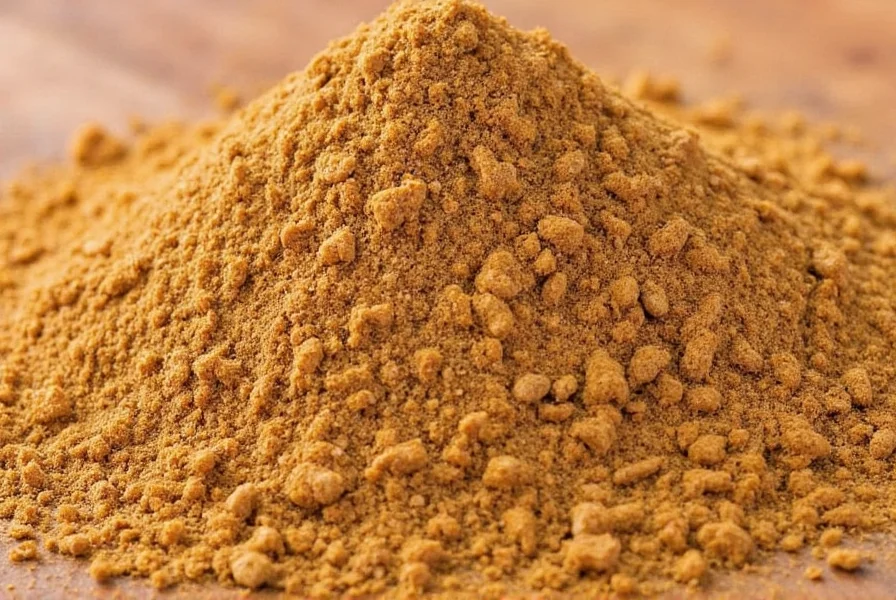
Understanding Cumin Powder: Origins and Production
Cumin powder originates from the dried seeds of the Cuminum cyminum plant, a member of the parsley family native to the Eastern Mediterranean and South Asia. Farmers harvest the plant when its seeds turn brown, then dry and thresh them before grinding. The grinding process transforms the oblong, ridged seeds into a fine powder that releases flavor compounds more readily than whole seeds.
When exploring what is cumin powder made from, it's important to note that authentic cumin powder contains only ground cumin seeds without additives. Some commercial blends may include fillers, so checking ingredient labels helps ensure purity. The finest cumin powder comes from freshly ground seeds, preserving the volatile oils responsible for its distinctive aroma.
Flavor Profile and Sensory Characteristics
Cumin powder offers a complex flavor profile that's simultaneously warm, earthy, and slightly bitter with citrus notes. Its aroma contains compounds like cuminaldehyde that create that characteristic spicy-sweet scent. The powder form provides immediate flavor impact compared to whole seeds, which require toasting to release their full potential.
| Characteristic | Cumin Powder | Whole Cumin Seeds |
|---|---|---|
| Flavor Release | Immediate | Requires toasting |
| Shelf Life | 6-12 months | 2-3 years |
| Flavor Intensity | Milder, more diffuse | More concentrated |
| Best Uses | Dry rubs, sauces, batters | Toasting, tempering, whole spice dishes |
Distinguishing Cumin Powder from Whole Seeds
Understanding the difference between cumin seeds and powder is crucial for proper culinary application. While both come from the same plant, their physical forms create different cooking behaviors. Powder integrates seamlessly into liquids and batters, making it ideal for marinades and spice pastes. Whole seeds maintain their integrity during cooking, providing bursts of flavor and visual texture.
Professional chefs often use both forms in the same dish—toasting whole seeds first for depth, then adding powder for consistent flavor distribution. This technique maximizes the spice's potential when preparing authentic how to use cumin powder in Indian cooking recipes or Middle Eastern spice blends.
Culinary Applications Across Global Cuisines
Cumin powder serves as a foundational spice in numerous culinary traditions. In Mexican cuisine, it's essential for chili powders and taco seasonings. Indian cooks incorporate it into garam masala and curry powders. Middle Eastern recipes use it in falafel and hummus. North African tagines frequently feature cumin powder alongside coriander and paprika.
When experimenting with what does cumin powder taste like in recipes, start with 1/4 teaspoon per serving and adjust to preference. Its flavor intensifies when cooked in oil—a technique called tempering that unlocks maximum aroma. For best results in how to store cumin powder properly, keep it in an airtight container away from light and heat, which preserves its volatile oils for up to one year.
Nutritional Benefits and Substitutes
Cumin powder contains iron, manganese, and antioxidants. Two teaspoons provide about 5% of your daily iron needs. While not a significant nutrient source by volume, its regular use in traditional diets correlates with various health benefits.
If you're wondering what to use instead of cumin powder, consider these alternatives:
- Caraway seeds (use 1:1 ratio, similar earthy profile)
- Coriander powder (use 1.5x amount, milder flavor)
- Garam masala (use 3/4 amount, more complex blend)
- Fennel seeds (use 1:1 ratio, sweeter alternative)

Maximizing Flavor in Your Cooking
To get the most from cumin powder, add it early in the cooking process when making sauces or stews, allowing its flavors to meld with other ingredients. For dry applications like rubs, mix with other spices and a small amount of oil to create a paste that adheres to proteins. When exploring how much cumin powder equals one teaspoon of seeds, use a 1:1.5 ratio (1.5x more powder than seeds by volume) since grinding increases surface area.
Many home cooks don't realize that can you toast cumin powder—while possible, it risks burning due to the fine particles. Instead, toast whole seeds then grind them fresh for superior flavor. This practice addresses the common question is ground cumin the same as cumin powder (yes, these terms are interchangeable).











 浙公网安备
33010002000092号
浙公网安备
33010002000092号 浙B2-20120091-4
浙B2-20120091-4